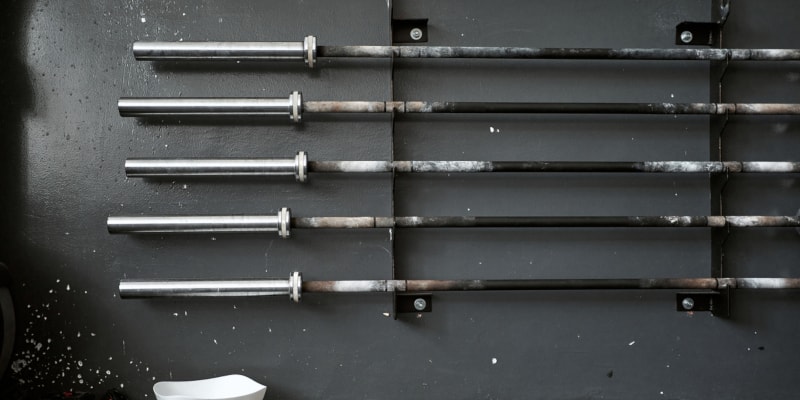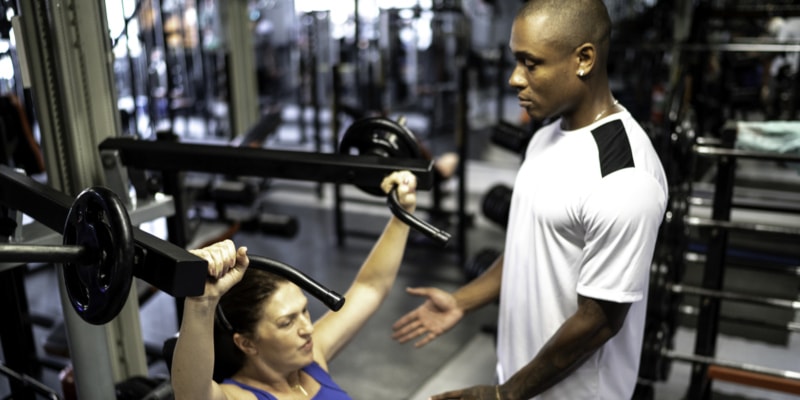Another common question people are confronted with when they are considering strength training is whether to go with barbell exercises or to use machines. Both offer resistance right? So one must be just as good as the other for the purpose of getting stronger, right? Well, there are pros and cons to both. Let’s look at how they compare.

In this particular time in history, commercial gyms are being shut down and/or their access is being restricted. If that’s the case where you live and you are considering purchasing equipment to use at home, then you cannot beat the versatility and economy of barbells. A single barbell and some weight plates to load it with, along with a power rack and a flat bench, are far easier and cheaper to come by than purchasing $30,000 worth of various machines in which to do comparable exercises. Typically a machine is only useable for one exercise, whereas the humble barbell, power rack, and bench can be used for more than 50 different exercises. The standard barbell equipment I’ve just listed here may cost you $,2400 – $3,000, but that’s a fraction of what half a dozen machines might cost.

Advantages of Machines vs. Barbells for Personal Training
If you do have ready access to a gym with hundreds of thousands of dollars of machines, though, you may still wonder what the advantages are of machines versus barbells. A fair question. Let’s look then at the functionality of each. Machines certainly have their place in training. They are less complicated to learn to use than a barbell. The movement of a machine follows a determined path. All you need to do is apply force to move the weight without thinking much more about what you are doing. The down-side is that most machines are built for someone who is 5’ 9” tall. The further you are away from that size, the less easily you will fit the machine. For people 10-12 inches shorter or taller than this, many machines may be too awkward to be used effectively and comfortably. The barbell, on the other hand, moves freely in all planes. On one hand, this makes it more difficult to learn to control and use correctly, but also makes the exercises more effective strength builders as well as an appropriate fit for all shapes and sizes of users. The fact that the barbell is an untethered implement makes it riskier to use than a machine, but simultaneously a more effective tool for developing strength. Lots more stabilizer muscles must be incorporated in the execution of barbell movements than machine-based. Machine-based movements are primarily performed while seated or lying down in some manner, while the barbell movements are mostly performed while standing on your feet. This means there is an inherent risk of falling while performing the barbell lifts. While some would tout this as a plus for machines, I see it as a detriment. The fact that you might fall over while performing barbell lifts means you are practicing and acquiring better balance from doing them. I count this as another reason barbells make for more effective strength training tools. Another feature of barbells that is usually superior to machines is that barbell exercises are often more “trainable”. This means you can add weight to them incrementally over time for far longer than a comparable machine-based movement. Many machines have been improved in this regard over their earlier iterations, so I have to acknowledge that many machine-based exercises are way more loadable or “trainable” than they used to be.
Advantages to Fitness Machines
There are certain advantages unique to machines though. Sometimes a person may have an injury or another limitation that prevents them from being able to do some of the barbell exercises. In such cases, access to machines is invaluable. At times there are some trainees, albeit rare, who are so weak and deconditioned that they need the support and assistance machines provide in order to effectively begin strength training. I’ve found that with a little creativity, though, a good trainer can still find alternatives to machines in cases such as this.
In summary, there are distinct advantages of both barbells and machines, but I feel there are far more advantages inherent to barbell training. In the end, if you just like machines and they keep you motivated to continue training, then use them. If you can continually get stronger over time from machine-based training, then it has my blessing. It’s better to train with machines than to not train at all. I will still contend that the barbell is superior for strength training due to the reasons listed here. It’s hard to beat the barbells’ versatility and accessibility. One of the reasons I also love barbell training is on account of how sustainable it is. For the cost of about three or four years of paying for a gym membership, you can own your own barbell training equipment, which will last you a lifetime. Then you can pass it on to your grandkids in the will as an heirloom, and they can get strong using it too! In this time we are living in, when we have seen so many restrictions shutting down gyms, owning your own barbell equipment so you can continue to train and get strong also puts barbells at a distinct advantage to machine-based training. In the end – you decide what’s right for you.


